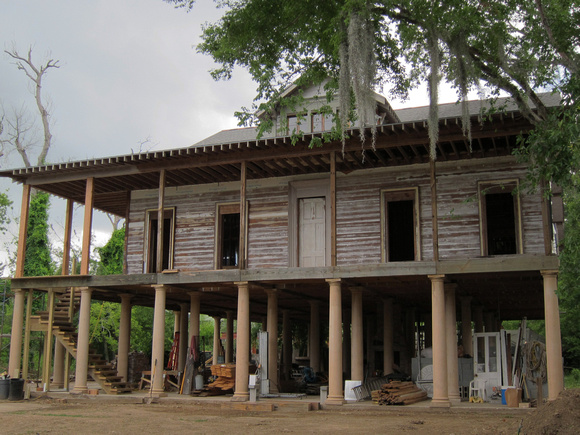Tom O'Connor's cameras may not be the most expensive contraptions (he mostly uses Canon cameras: a PowerShot S95, an EOS 60D, and a Rebel 1100D (with either a Sigma 70-300mm f/4-5.6 or Canon EF 55-200mm f/4.5-5.6 or Opteka 420-800mm or Canon EF 50mm f/1.8 II). The 60D and 1100D are his current faves mainly because Magic Lantern firmware is enabled on them. He also likes to play around with vintage cameras - including a Canon AE-1, a Minolta X-700, a Minolta srT 201 with a Tamron SP 35-80mm lens, and an old Six - Twenty Brownie Junior that his maternal grandparents used to own. In sum, Tom likes to think that he makes up for any gear limitation with a calculated impulsiveness (e.g., he's willing to stand in the middle of the street or in an abandoned building to get the perfect angle for a shot).
Speaking of his inspirations in the wide world of photography, Ralph Eugene Meatyard is one of Tom's key influences, considering how Meatyard was one of the first American photographers to play masterfully with the formal aspects of photography in his own time-period (e.g., "the pencil of nature"). As J Henry Fair once claimed, "whether it's Mayan ruins or a ruined factory, they both are icons of the civilization that produced them, and they tell a story." In this way, Tom is a fervent advocate for Juan García Espinosa's "imperfect cinema" in the world of photography as well--i.e., the most evocative photographs are those that have freed themselves from the burden of needing to be perfect--technologically or otherwise. Tom also agrees wholeheartedly with W.J.T. Mitchell who asserts that, to truly grasp the power of images, we should never relate to them simply as "inert" objects; instead, we need to experience them as "living beings" in their own rights (seeing as they seem to possess their own needs, drives, and desires).
When he's not hunting for new-to-him, pic-worthy locations, Tom is a university professor and poet who wrote a critical book on contemporary poetry and its relationship to computer-driven new media (Poetic Acts & New Media, UPA 2007). His poetry has been published in zines such as MARGIE, Soundings East, Notre Dame Review, Columbia Poetry Review, and Poetry Southeast; his critical articles have appeared in Pedagogy, The Journal of Film & Video, Disability Studies Quarterly, Horror Studies, and the Journal of the Fantastic in the Arts, among others.


